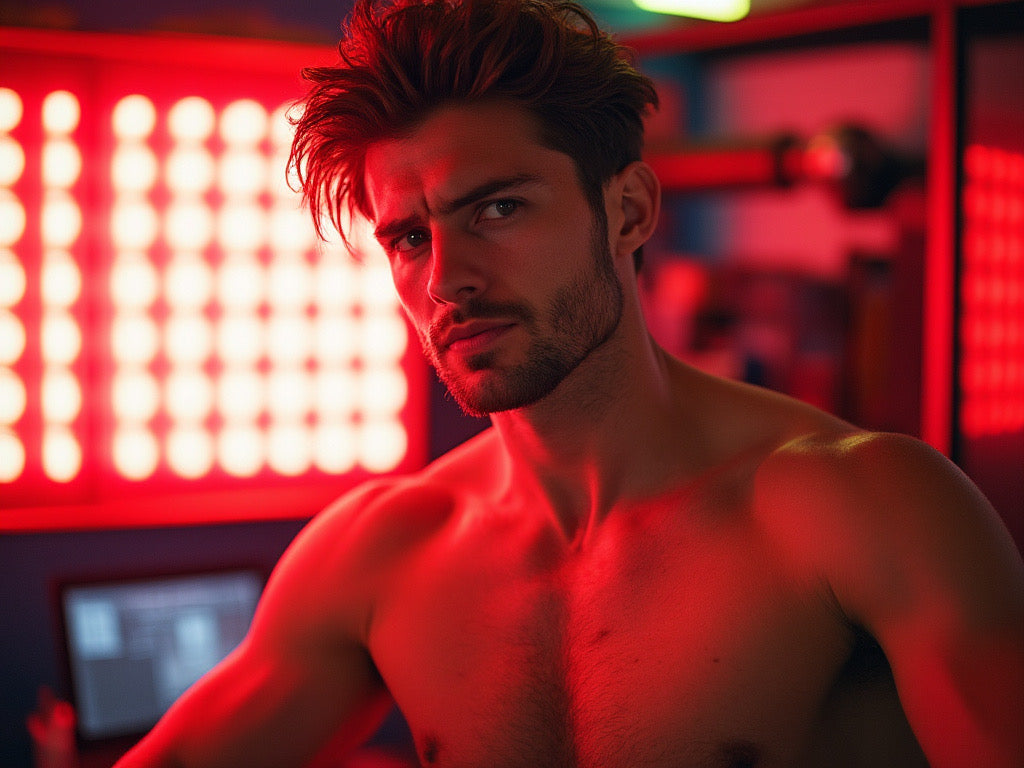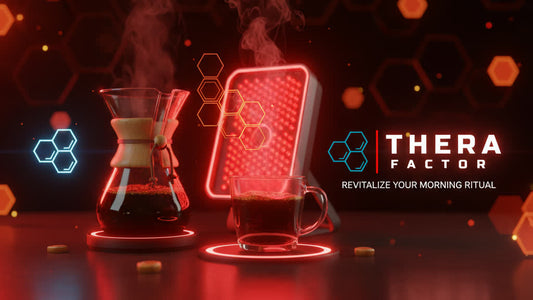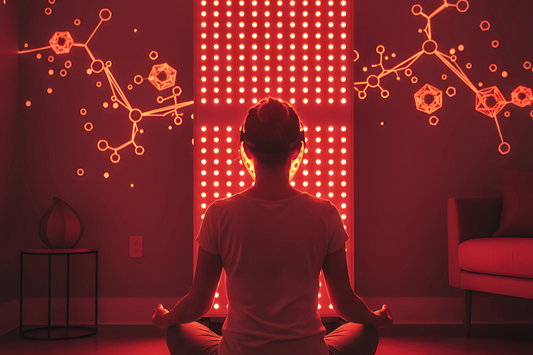
Common Mistakes to Avoid with Red Light Therapy
Compartir
Mistake #1: Being too close or too far away during treatment
A common mistake is standing too close or too far from a red light therapy panel.
Getting too close to a device will prevent the wavelengths from mixing upon contact with the skin. This essentially cancels out the benefits of stimulating mitochondria with multiple wavelengths simultaneously.
This is also why devices like red light therapy masks are less ideal for treatment than red light therapy panels. Close contact essentially blocks the projection of the light diodes.
The heat felt when you're too close to a red light therapy panel may also not be ideal.
Staying too far away can also reduce the intensity of treatment.
We recommend a distance of 20 to 35 cm for deep tissue or 40 to 60 cm for superficial skin therapy during treatment.
Mistake #2: Using the wrong red light therapy device
Full-body panels offer the best treatment in all scenarios because they treat the mitochondria throughout the body, resulting in healing of all parts of the body that might otherwise be targeted specifically.
While it may seem counterintuitive, this explains why devices that target specific areas are no longer effective at healing them, with the only potential exception being exposure to blue light, which destroys bacteria on the skin's surface.
Smaller panels are less effective than larger ones, and non-panel devices are rarely worth it and often not even cheaper.
Mistake #3: Using the wrong wavelengths in red light therapy
Red light therapy panels look similar on the outside, but the wavelengths they emit can differ significantly, and the wavelengths themselves are a large part of what causes mitochondrial stimulation.
The longer the wavelength, the deeper it penetrates the skin. Using multiple wavelengths ensures non-invasive therapeutic penetration beyond the skin to various depths. While surface area exposure should be maximized, the same is true for exposure to healthy, stimulating wavelengths from the surface to as deep as possible.
Near-infrared light is ideal for treating signs of aging, sun damage, acne, rosacea, psoriasis, wrinkled skin, and stretch marks. Meanwhile, NIR+ light is needed to treat muscle pain, deep bruising, joint pain, healing, and systemic inflammation. For extremely deep tissue healing and to activate the body's "heat shock proteins," users should look for a panel that emits 1064 nm wavelengths.
Devices with a variety of wavelengths offer optimal flexibility and better results during treatment.
Blue light therapy is best for treating acne-causing bacteria on the skin's surface. Green light has shown some promise but less overall therapeutic value. Other shades in the color spectrum, however, fall far short in terms of effectiveness. These include yellow, cyan, and purple light therapy devices.
The main point is to look for a variety of wavelengths of red light, and traces of blue light wouldn't hurt either.
Mistake #4: Covering Your Body While Using Red Light Therapy
Red light therapy works best when applied to clean, bare skin. Clothing, makeup, face powder, henna, oils, and lotions can block and scatter the light.
For this reason, right after a shower is usually the perfect time for a red light therapy session.
The same generally applies to clothing. Red light therapy works best when the skin receives maximum exposure.
Mistake #5: Infrequent Red Light Therapy Treatment Sessions
Red light therapy typically takes at least a few weeks to see results. During this time, it's important to maintain regular treatment.
It works at the cellular level. Once individual cells are treated and their function restored, the body needs time for the effects to become evident.
Using red light therapy occasionally won't yield significant results. For optimal results, users should aim for sessions of up to 20 minutes, four days a week.
Consistent red light therapy supports cells at all stages at once: emerging, mature, and damaged cells.
Mistake #6: Excessively long treatment sessions
Users get the most out of red light therapy by having daily treatment sessions. As long as users follow the treatment guidelines, they don't experience any side effects.
Some users will be tempted to get a more intense treatment, having longer treatment sessions than recommended. This may seem ideal for an ultra-committed user, but it's not recommended.
At best, the user will experience diminishing returns from extremely long sessions, and at worst, the user will experience minor side effects such as skin redness. It should be emphasized that there is no risk of serious adverse events resulting from excessively long treatment times. These are not recommended primarily because they result in significantly diminished returns.
In a way, red light therapy is like food for your cells. By providing them with small amounts of light daily, they function optimally. By being "stuffed" with excessively long sessions, most of their energy is simply wasted.
For those who have more free time to optimize their health, there are many other things you can do, such as exercise and meditation!
Mistake #7: Forgetting supplemental treatments
Red light therapy is an excellent practice and works even better when combined with the many elements of a healthy lifestyle.
It has been shown to treat numerous chronic conditions, which are also helped by good nutrition and potentially other doctor-recommended treatments.
We recommend that users consult a doctor to maximize their chances of optimal health and/or treatment of any medical conditions.
Mistake #8: Expecting overnight results
Red light therapy can take several weeks or longer before results begin to appear. It will be easier to engage in daily treatment once it becomes habitual.
However, having a panel at home makes treatment much easier and more convenient than having to go to a clinic every time treatment is needed.
Better, faster results with the TheraPRO series
Using a powerful, medical-grade light therapy device from a legitimate and reputable company is another important factor in achieving results.
TheraPRO features the most comprehensive treatment available, including R+ wavelengths, NIR+ wavelengths, and blue wavelength traces as well.
Check out more articles to discover the many ways red light therapy can improve your overall well-being!







